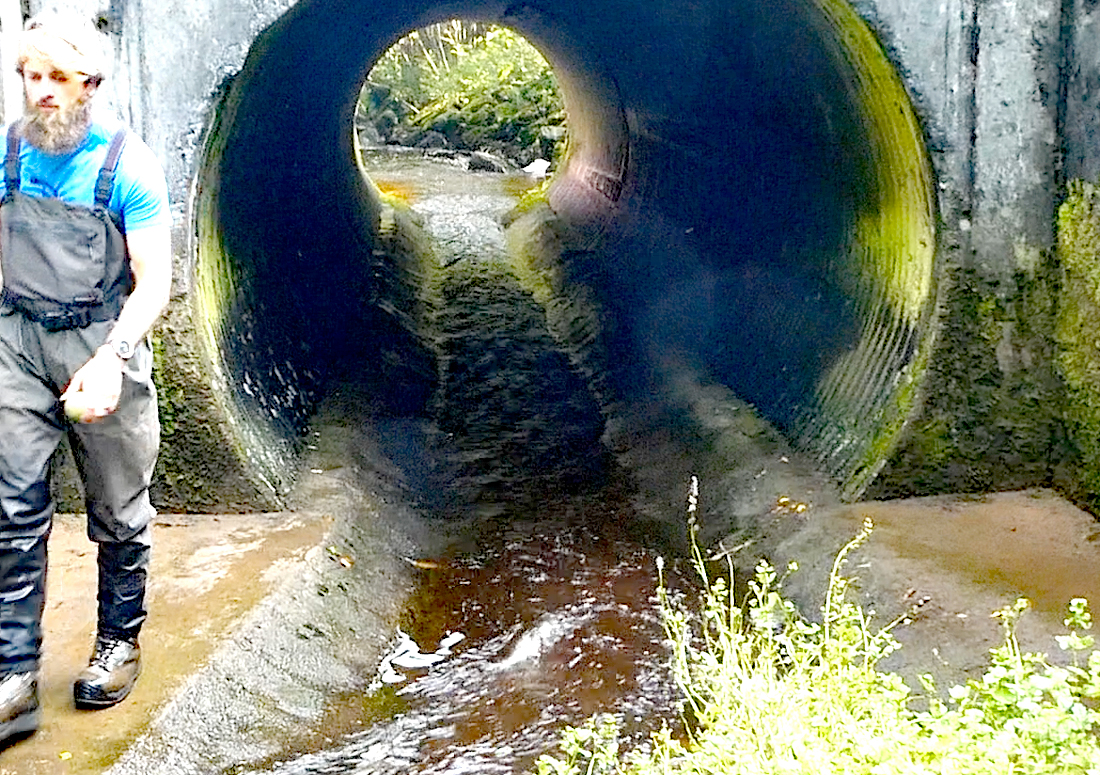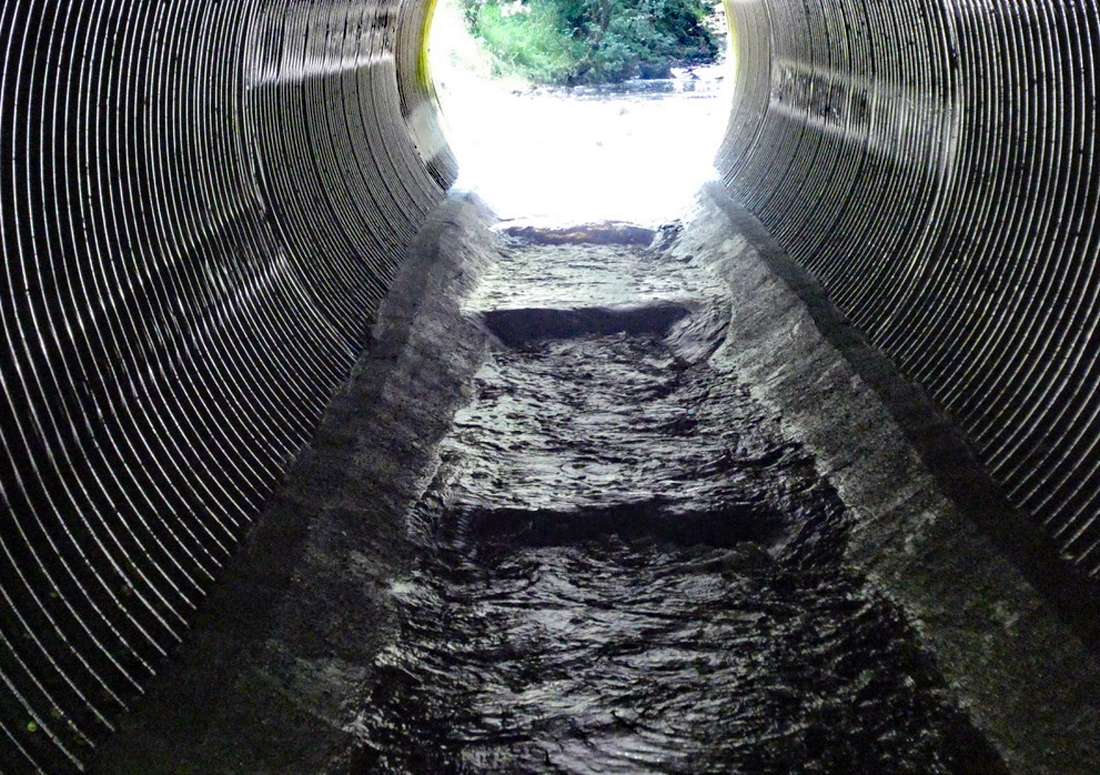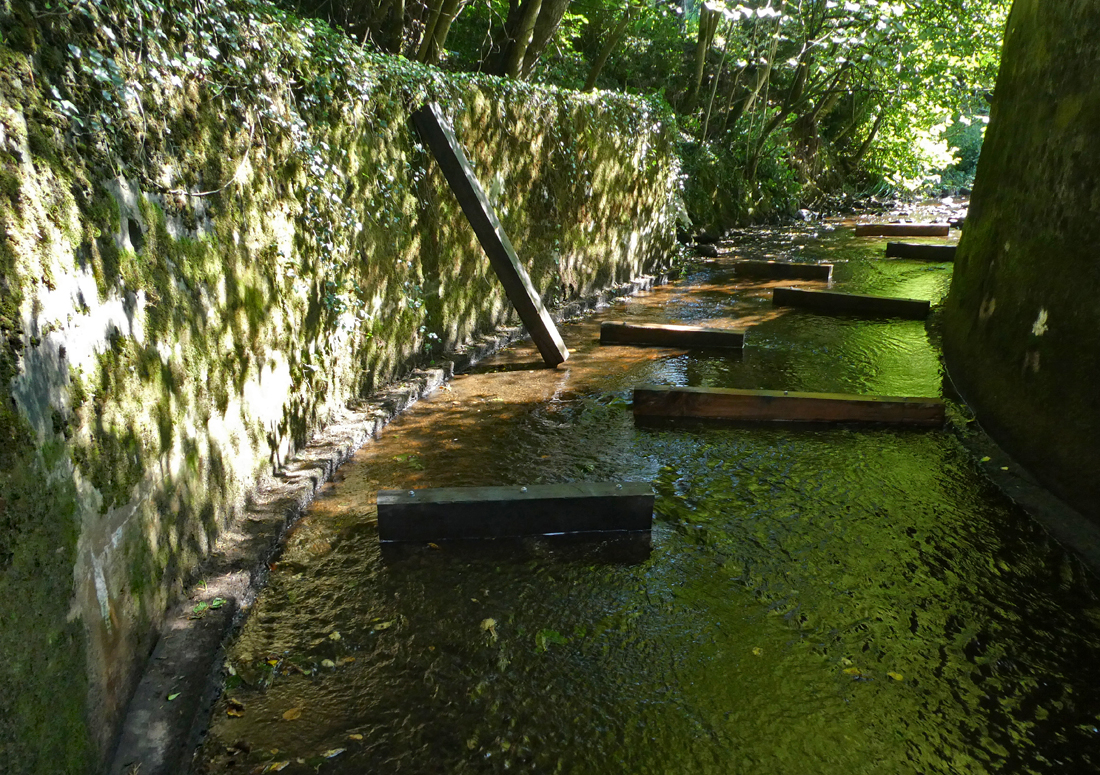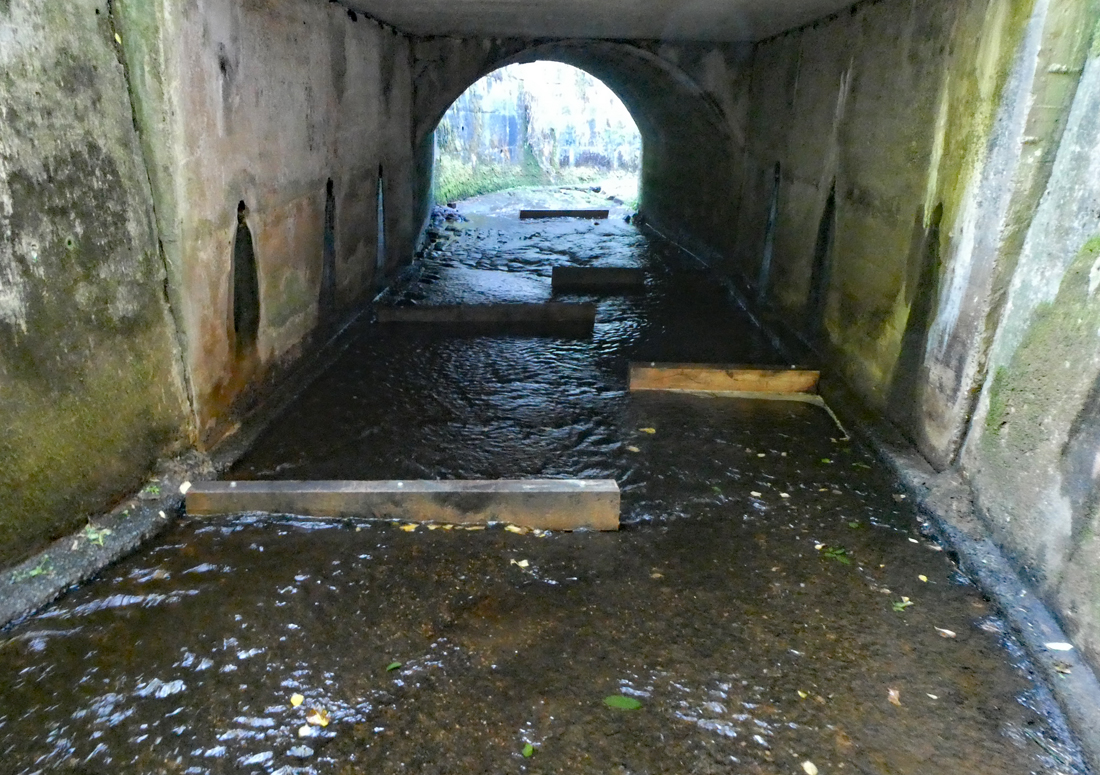
The upper culvert which acted as a flume as water levels increased. The velocity, length and gradient all made this virtually impassable to salmon and trout
Mauchline and Ballochmyle Angling Club collaborated with Ayrshire Rivers Trust to improve fish migration into the Bogend Burn at Catrine where two culverts in the lower burn prevented most fish from migrating upstream. The Club secured funding from Cumnock and Doon Valley Minerals Trust to allow both culverts to be retro fitted with baffle systems that should slow the flows, add depth and provide resting opportunities for trout and salmon if they try to migrate upstream for spawning.
ART proved that there were very few fish surviving anywhere in the burn and virtually no salmonids. As water quality has long been an issue, they were quick to look for improvements once agricultural fencing was installed in key areas after input from SEPA through their priority catchments initiative. With the prospect of things improving, getting trout and salmon back into the burn was a priority.
The Trust secured the CAR authorisation necessary to undertake the works and provided SEPA with suitable designs and methods.

Baffles installed, the difference to the depth and velocity within the upper culvert is immediately obvious. This will allow fish to make it through this culvert with ease
With low flows last week, ART staff aided by members from Mauchline and Ballochmyle Angling Club set about fixing baffles to these culverts. The Trust had prefabricated HDPE flexible baffles for the upper culvert and cut and predrilled untreated green oak timbers for the lower and flatter surfaces. Having studied the way the water moved through the culverts and over a range of flows, the baffles were laid out during low water and once they were content with the arrangement, they were anchored to the bed. The lower culvert has a few more baffles to be added next week to complete it and then the Trust will monitor how things work and make whatever adjustments they feel necessary.

Installing untreated green oak baffles to the lower culvert. Care was taken to gain the necessary depths and velocities while also minimising the build up of coarse sediment behind the baffles. keeping maintenance to a minimum is essential as it may be several years before Ayrshire Roads Alliance ever gets around to making a more permanent fish pass at this culvert.

A view downstream through the road bridge as baffles were being installed
Already, the rate of flow through the upper culvert has been reduced by around two thirds and the depth increased from around 40mm to over 200mm. The Trust are producing a short video that demonstrates the change to the flows and once the lower pass is competed and adequate rain has fallen, they will upload a video for all to see. They will also monitor trout and salmon numbers in the burn over the next few seasons and hopefully be able to confirm that recovery is underway as a result of this work.
SEPA had classified these culverts as a complete barrier to migration after ART alerted them to their presence.
We will post an update on these culverts once the video is available and later in the year when there is a decent flow going through the passes
ART has long recommended that the Board do similar at the Greenock Culvert where fish can find it difficult to get through to some of the best spawning grounds available. The Board hope to be able to progress with this within the year. ART has already designed and provisionally agreed consents for this work with Ayrshire Roads Alliance and SEPA.


